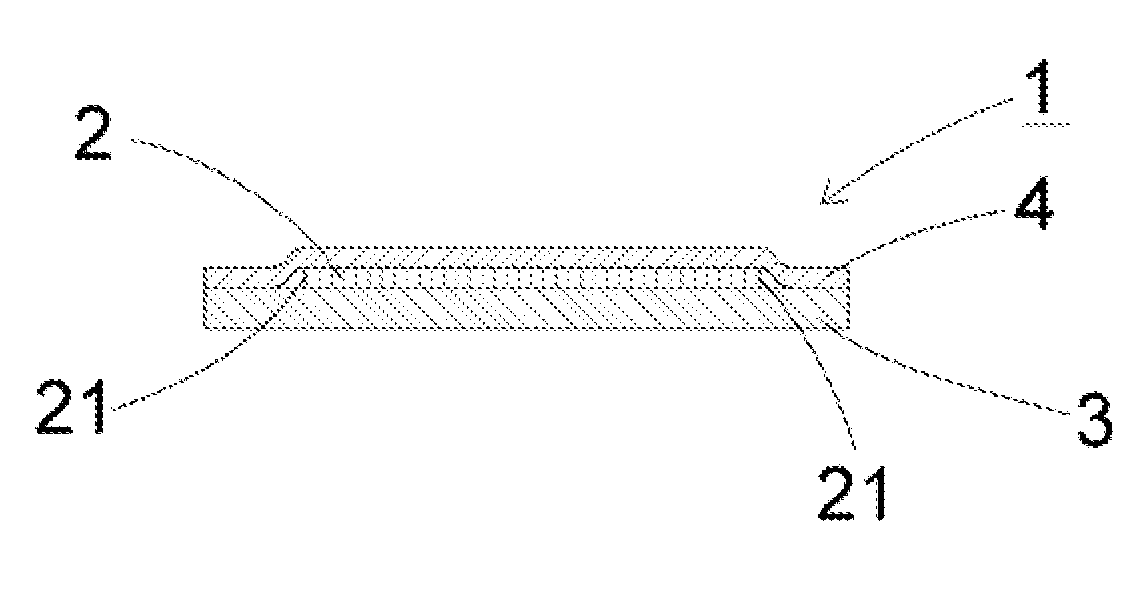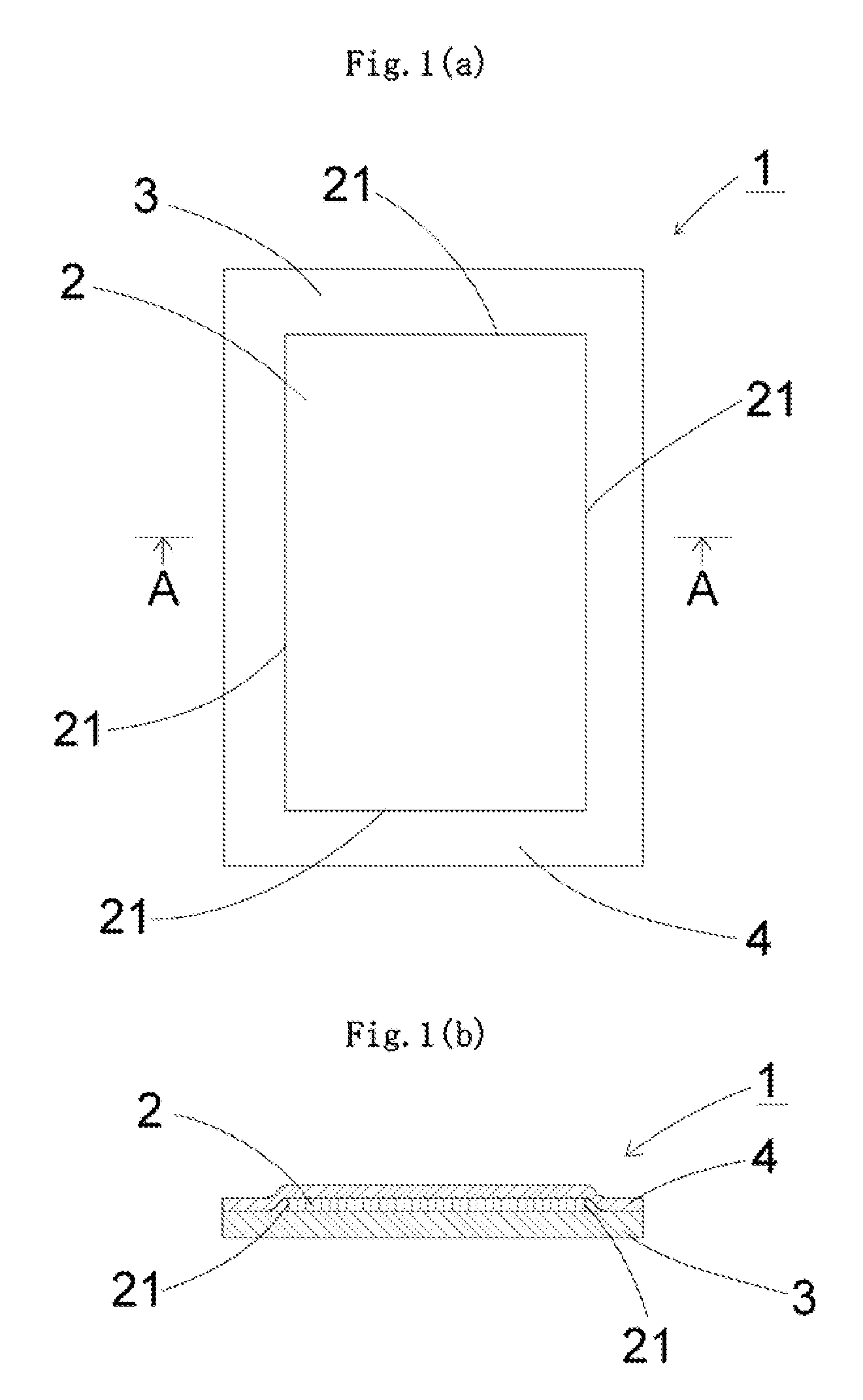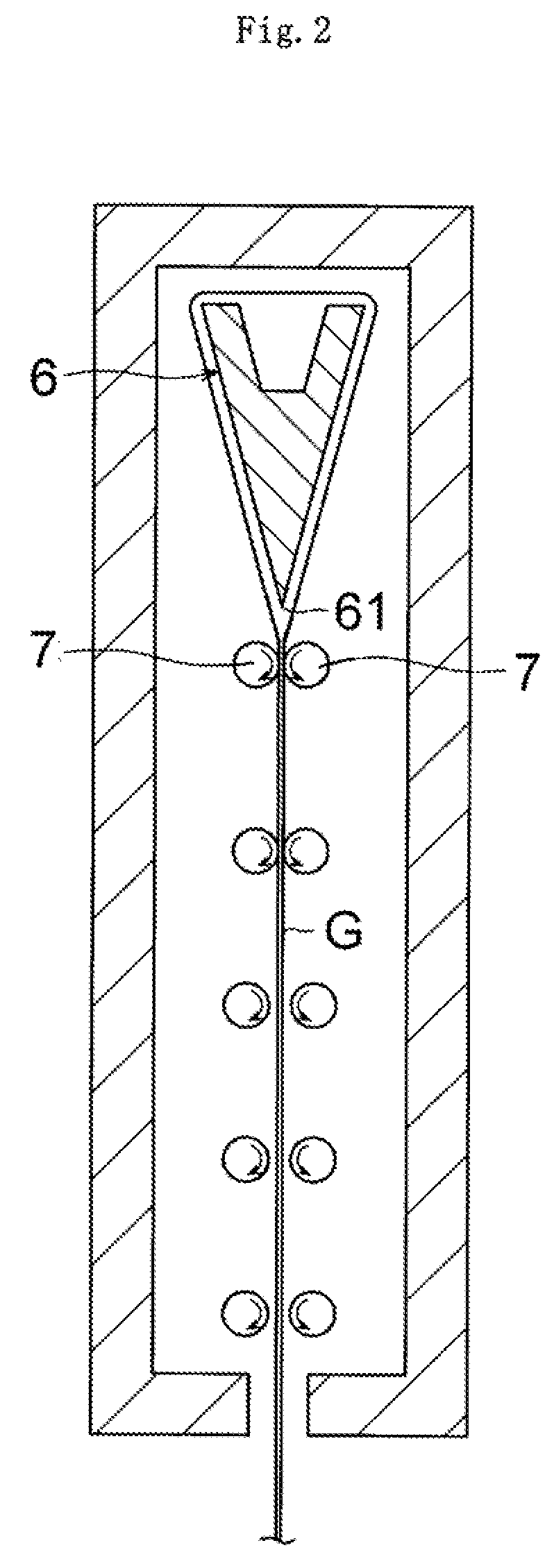Glass film laminate, glass roll of the laminate, method of protecting end face of glass film, and method of producing glass roll
a technology of glass film and end face, which is applied in the direction of glass making apparatus, manufacturing tools, transportation and packaging, etc., can solve the problems of brittle glass used in the substrate, low flexibility, and tensile stress, and achieve the effect of preventing stress, improving the handleability of glass film, and convenient production-related treatmen
- Summary
- Abstract
- Description
- Claims
- Application Information
AI Technical Summary
Benefits of technology
Problems solved by technology
Method used
Image
Examples
Embodiment Construction
[0037]Hereinafter, preferred embodiments of a glass film laminate and a glass roll of the glass film laminate according to the present invention are described with reference to the drawings.
[0038]As illustrated in each of FIGS. 1a) and 1(b), a glass film laminate (1) according to the present invention has a glass film (2), a support glass (3), and a protective film (4).
[0039]A silicate glass, preferably a silica glass or a borosilicate glass, or most preferably a no-alkali borosilicate glass is used in the glass film (2). When the glass film (2) contains an alkali component, the substitution of a cation occurs on its surface. As a result, the so-called soda blasting phenomenon occurs, and hence the film becomes structurally rough. In this case, when the glass film (2) is used while being curved, the film may break from a portion that has become rough owing to age deterioration. It should be noted that the term “no-alkali borosilicate glass” as used herein refers to a glass substanti...
PUM
| Property | Measurement | Unit |
|---|---|---|
| thickness | aaaaa | aaaaa |
| thickness | aaaaa | aaaaa |
| thickness | aaaaa | aaaaa |
Abstract
Description
Claims
Application Information
 Login to View More
Login to View More - R&D
- Intellectual Property
- Life Sciences
- Materials
- Tech Scout
- Unparalleled Data Quality
- Higher Quality Content
- 60% Fewer Hallucinations
Browse by: Latest US Patents, China's latest patents, Technical Efficacy Thesaurus, Application Domain, Technology Topic, Popular Technical Reports.
© 2025 PatSnap. All rights reserved.Legal|Privacy policy|Modern Slavery Act Transparency Statement|Sitemap|About US| Contact US: help@patsnap.com



